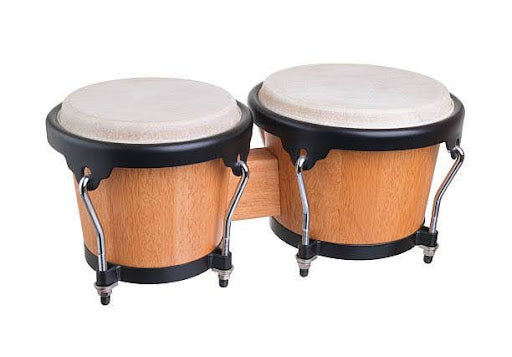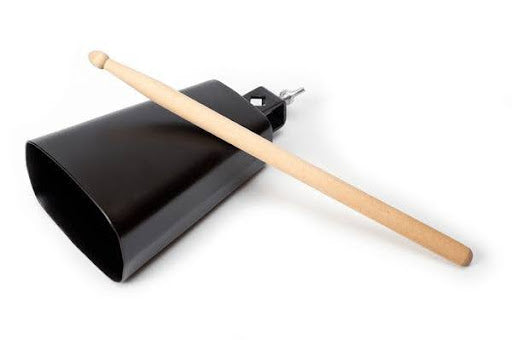School Of Percussion: 11 Most Famous Percussion Instruments Used Globally
Share
Percussion instruments are precisely the driving force behind every musical sound. They are the essential pulse that brings life to every song and inspires movement across all cultures.
These powerful tools speak a language that transcends borders and connects us all. From the ancient ceremonial sounds to the modern beats heard in studios and stadiums.
Understanding their impact would enhance our appreciation for music itself.
This article explores what makes certain percussion instruments truly famous around the world – considering their broad appeal, their influence across genres, and how widely they are embraced.
We've compiled a curated list of the most famous percussion instruments that have undeniably shaped global music.
Our Top 11 Percussion Instruments

Now, let's explore the instruments that have truly become worldwide stars.
These are the sounds that have crossed oceans, inspired countless musicians, and earned their spot as the most famous percussion instruments around the globe.
Here is our list, celebrating their impact and widespread appeal:
1. The Drum Kit (Drum Set):

This is the main set of drums for popular music, usually including a bass drum, snare, tom-toms, and cymbals.
If you've ever enjoyed rock music, Jazz, or Pop, funk, R&B; the Drum set is the driving behind it.
Countless modern songs worldwide feature the drumset to add more melody to the rhythms.
2. Djembe:

A hand-played, goblet-shaped drum from West Africa, known for its deep bass, clear tones, and sharp slaps.
The Djembe’s sound is popularly recognized to possess a cultural voice, now it is widely used in world music, schools, and drum circles everywhere.
3. Congas:

These are tall, narrow drums that came from Afro-Cuban culture, usually played in pairs or twos or threes by hand.
They're key to the lively beats of Latin music like salsa and Latin jazz, and their soulful sound is also popular in pop and funk.
4. Bongos:

The Bongos is a pair of small, open-bottom drums joined together, played with hands.
You will easily recognize their sound, because they have special accents and fills in Latin American music and many other styles.
5. Tambourine:

This is a hand drum with metal jingles. You can shake it, hit it, or tap it to create sound.
You'll find it in almost every type of music; pop, rock, folk, gospel, orchestras, and more. It adds sparkle and feeling to tracks everywhere.
6. Tabla:

A pair of tuned hand drums from India, one larger (bayan) and one smaller (dayan).
They are central to Indian classical music, and their unique sounds, with fast and complex playing style have influenced electronic music across the world.
7. Vibraphone (Mallet Percussion):

These instruments have tuned wooden (marimba) or metal (vibraphone) bars, played with mallets to create melodic sounds.
They are often heard in orchestra music, jazz, and modern classical pieces, and are increasingly used in movies and pop for their rich singing qualities.
8. Cymbal:

These are metal discs, usually made of a bronze alloy, that you crash together or hit with sticks.
Cymbals are vital components of drum kits, orchestras, and marching bands worldwide. They are used to create big accents, smooth, and sustained sounds.
9. Shaker / Maraca:

The Maraca are handheld instruments that makes sound by rattling beads or other small parts inside.
They are found in almost every culture for adding soft textures and driving energy to music, from folk songs to pop hits.
10. Cowbell:

A metal bell (without a clapper) that you hit with a stick.
It has a distinct and clear sound that is classic in Latin music, funk, rock, and disco.
It often provides a strong and clear beat that helps guide the music.
11. The Talking Drum

This is a group of West African drums, hourglass-shaped, played with a curved stick and by squeezing cords to change pitch.
What makes the Talking Drum truly famous is its incredible ability to mimic the tones and pitches of human speech.
This unique "talking" ability has fascinated musicians and audiences worldwide, making it a powerful cultural symbol and a truly remarkable instrument often featured in music around the world.
What Makes Them Famous?
So, why do certain drums, bells, or shakers become truly famous around the world? It’s not by accident.
There are common threads that connect these most famous percussion instruments and give them their widespread appeal.
Let's look at the qualities that help them cross borders and leave a lasting mark:
I. They are easy to get started with:
Some instruments are simple enough for anyone to pick up and make a sound right away. Think of a shaker or a tambourine – you don't need years of training to enjoy them.
This low barrier to entry means more people play them, which quickly spreads their fame.
Even instruments like the drum kit have basic beats that are relatively easy to learn, even if true mastery takes time.
II. Fits Many Types of Music:
The ability to sound good in different music styles is a huge factor. A drum kit, for example, is at home in rock, jazz, pop, and blues.
Cymbals add flavor to orchestral music, marching bands, and dance tracks.
Instruments that are versatile and can adapt to new sounds will naturally become popular everywhere, cementing their place among the most famous percussion instruments.
III. They produce deep Cultural Story:
Many of these instruments carry rich history and cultural meaning. The Djembe, Congas, and Tabla aren't just tools; they're voices of ancient traditions and communities.
This deep connection gives them a powerful story that people around the world want to learn about and connect with, going beyond just the sound itself.
Their cultural roots make them resonate globally.
IV. Unique Sound and Purpose:
Each famous instrument has a distinctive voice that makes it stand out.
You can't mistake the sharp crack of a snare drum, the deep boom of a bass drum, or the bright jingle of a tambourine.
These instruments often play a special role in the music that no other instrument can quite fill, making them unforgettable.

V. Heard Everywhere:
How often an instrument appears in popular songs, movies, TV shows, and live performances plays a huge part in its fame.
If you hear a certain sound on the radio or in your favorite film, it quickly becomes familiar and famous.
The drum kit, in particular, benefits greatly from being at the center of so much recorded music.
VI. Brings People Together:
Many of these instruments are central to group music-making. Think of drum circles with djembes, bands playing with drum kits, or orchestras with mallets.
Their role in creating shared musical experiences and connecting communities adds to their widespread use and fame. Music often thrives when people can create it together.
Instruments That Sound Percussive But Are Not
It's easy to think that if you hit, shake, or scrape an instrument to make a sound, it must be percussion. But in the vast world of music, some instruments can be a bit deceiving!
They might sound very punchy or rhythmic, yet they actually belong to other instrument families.
Understanding this helps us appreciate the true definition of percussion.
Here are some common examples of instruments that often sound like percussion, but are actually defined differently:
1. The Piano:

When you press a key, small hammers inside strike strings, making a sharp, immediate sound. Many pianists also play with a strong, driving beat.
However, the piano is a string instrument (a chordophone). Its sound comes from vibrating strings, not from hitting the main body or a drum skin.
2. The Harp:

Each string on a harp is plucked, giving a clear, crisp start to the note, which can feel very percussive.
But like the piano, the harp's sound comes from vibrating strings. It's a string instrument, not percussion.
3. Whistles, Sirens, and Horns (Wind Instruments):

They're often used for quick, sharp effects or rhythmic bursts in music, and percussionists sometimes play them.
However, these are wind instruments (aerophones). Their sound comes from a vibrating column of air (like blowing into a flute), not from being hit, shaken, or scraped.
4. Guitar or Bass:

Techniques like "slap bass" or tapping an acoustic guitar's body create distinct, striking sounds that add to the beat.
Still, guitars and basses are string instruments. Their main sound comes from vibrating strings; any body taps are secondary effects.
Knowing these differences helps us better appreciate the distinct qualities of percussion and how each instrument finds its unique place in the big, beautiful world of music.
In Conclusion…
These ten instruments truly show the amazing variety and cleverness behind percussion. They remind us that no matter where we are in the world, a powerful beat can bring us together.
They are truly among the most famous percussion instruments that define sounds across the globe.
This journey through the School of Percussion is always open. It invites us to keep learning and appreciating how these incredible instruments cross all borders and speak directly to our human spirit.
They prove that rhythm is a language everyone understands.
Now, we turn it over to you, the global percussion community!
Which instrument would you add to this definitive list of most famous percussion instruments?
Share your thoughts and join the conversation!





